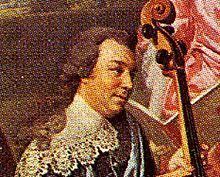Name Sir Young, Role Politician | Died 1788 | |
 | ||
Born 1724 Antigua Occupation First British governor of Dominica | ||
Sir William Young, 1st Baronet (1724/5–1788) was a British politician and sugar plantation owner. He served as President of the Commission for the Sale of Lands in the Ceded Islands, and was appointed the first non-military Governor of Dominica in 1768.
Contents
Career
He was born in Antigua in 1725, the son of Dr William Young who had fled from Scotland after the Jacobite uprising of 1715.
He was elected a Fellow of the Royal Society in 1748, his candidature citation reading "Residing at Chalton near Canterbury, A Gentleman well versed in Natural and Experimental knowledge, and alwaies ready to promote whatever may tend to the Improvement of Arts and Sciences".
Early in 1764, Prime Minister George Grenville nominated Young and he was appointed in the same year to be President of the Commission for the Sale of Lands in the Ceded Islands. The islands included Grenada, Tobago, Dominica, and St Vincent, acquired from France as a result of the 1763 Peace of Paris. In late 1764, he and his group sailed for Barbados, spending eight years away from his family during the period of 1764 to 1773, though in fact he made at least two return journeys in 1767 and 1770. James Harris reports on attending concerts at Young's residence in those years. The artist Agostino Brunias travelled with Young, recording Young's progress and the visual context of his Commission's work.
Young recorded "110 voyages of a like nature performed in the course of nine years amongst the ceded islands on the service of the Commission for the sale of lands." In 1768, Young was made Lieutenant Governor of Dominica and was chosen to be the first Governor of the new government, being sworn in on 17 November 1770. He was responsible for building the main military stronghold of Dominica in Roseau, Fort Young (now a hotel) in 1770 and for Government House, Dominica, his residence near the fort. He left Dominica in 1772, rushing to St Vincent to "assist with the Carib War" and to protect his estates there. In 1769 he was made Baronet Young of North Dean.
He was also a diarist and illustrator of works related to the Caribbean islands, although he hired Italian painter Brunias to paint pictures for him of the islands' people and interaction between the colonists and the natives, travelling with him through the islands. He was the author of Considerations which may tend to promote the settlement of our new West-India colonies: by encouraging individuals to embark in the undertaking (1764).
Personal life
Young and his second wife, Elizabeth (1729–1801), had several children, including Sarah Elizabeth, William, Portia, Elizabeth, Mary, Henry, John, and Olivia. He and ten family members were featured in the oil painting, The Family of Sir William Young, Baronet (ca.1766) by Johann Zoffany. His eldest son, Sir William Young, 2nd Baronet (1749–1815), became a Governor of Tobago.
Sir William purchased some of the best pieces of real estate on Antigua, St Vincent, and Tobago. He left four plantations to his son, William, after his death and a total of 896 African slaves. He had been seriously in debt and left a sum of around £110,000 (£12,518,996 in 2017 pounds) for his son to pay off.
Legacy
Young Island in the Grenadines is named in his honour.
